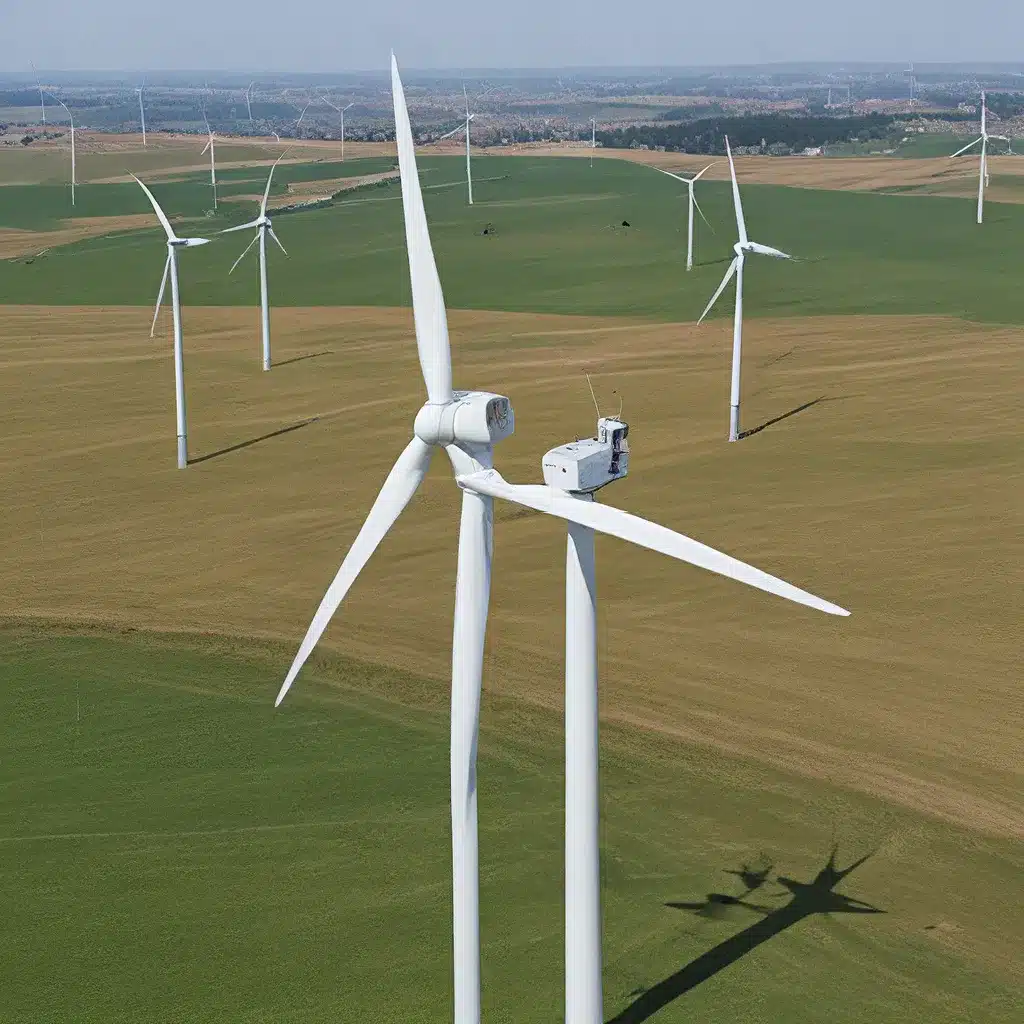
In the ever-evolving landscape of renewable energy solutions, one technology that has quietly been gaining momentum is the humble small-scale wind turbine. While large wind farms have captured the public’s imagination, these smaller counterparts are proving to be a game-changer, offering individuals, businesses, and communities alike the opportunity to harness the power of the wind and take control of their energy needs.
Unlocking the Potential of Small-Scale Wind Turbines
As I delve into the world of small-scale wind turbines, I can’t help but feel a sense of excitement and wonder. It’s a technology that has the potential to transform the way we think about energy, empowering us to become more self-sufficient and eco-conscious.
One of the key advantages of small-scale wind turbines is their versatility. Unlike their hulking, utility-scale cousins, these compact units can be installed virtually anywhere – on rooftops, in backyards, or even on the top of buildings. This means that individuals, businesses, and communities can harness the power of the wind, regardless of their location.
But the benefits of small-scale wind turbines go beyond just their physical size and placement. These systems are also remarkably efficient, capable of converting a significant portion of the wind’s kinetic energy into usable electricity. In fact, according to the U.S. Department of Energy, small wind turbines can have up to 40% efficiency – a figure that puts them on par with their larger counterparts.
Navigating the Landscape of Small-Scale Wind Turbine Technologies
When it comes to small-scale wind turbines, there are two main types to consider: horizontal-axis wind turbines (HAWTs) and vertical-axis wind turbines (VAWTs). Each has its own unique advantages and applications, making them suitable for different environments and needs.
Horizontal-Axis Wind Turbines (HAWTs) are the more traditional and widely recognized design, with their iconic three-bladed rotors mounted on a horizontal axis. These turbines are highly efficient at capturing the wind’s energy and are often used in large-scale wind farms. However, they also require a relatively unobstructed wind flow, making them better suited for open spaces or rooftop installations.
In contrast, Vertical-Axis Wind Turbines (VAWTs) take a more unconventional approach, with their blades mounted on a vertical axis. These turbines are less sensitive to wind direction, allowing them to operate in more turbulent or gusty environments. This makes them a viable option for urban areas or locations with numerous obstacles, such as buildings or trees.
Leveraging the Power of Small-Scale Wind Turbines
As I delve deeper into the world of small-scale wind turbines, I’m struck by the sheer diversity of applications they can serve. From powering individual homes to providing supplementary energy for businesses, these versatile systems are revolutionizing the way we think about renewable energy.
One particularly promising application is the use of small-scale wind turbines in remote or off-grid locations. In areas where access to the electrical grid is limited or nonexistent, these compact turbines can offer a reliable and affordable source of power, empowering communities and individuals to become more self-sufficient.
But the impact of small-scale wind turbines doesn’t stop there. Across the globe, communities and municipalities are embracing this technology as a means of reducing their carbon footprint and transitioning towards a more sustainable future. By integrating small-scale wind turbines into their energy mix, these forward-thinking entities are demonstrating the transformative potential of this technology.
The Future of Small-Scale Wind Turbines
As I look towards the future of small-scale wind turbines, I can’t help but feel a sense of boundless potential. With the global small wind turbine market projected to grow significantly in the coming years, the opportunities for innovation and adoption are endless.
One area that holds particular promise is the continued advancement of turbine technology. As researchers and engineers push the boundaries of design and efficiency, we’re likely to see even more powerful and reliable small-scale wind turbines emerge. This could unlock new applications, such as urban wind farms or integrated systems that combine wind and solar power.
But the future of small-scale wind turbines isn’t just about technological breakthroughs. It’s also about empowering individuals and communities to take control of their energy needs and become active participants in the renewable energy revolution. And as more people discover the benefits of these compact, versatile systems, I’m confident that we’ll see a groundswell of grassroots adoption that will transform the energy landscape as we know it.
So, as you navigate the world of renewable energy solutions, I encourage you to keep a keen eye on the potential of small-scale wind turbines. Whether you’re a homeowner, a business owner, or a community leader, this technology just might be the key to unlocking a more sustainable and empowered future.
And if you’re interested in exploring the possibilities of small-scale wind turbines further, I’d be more than happy to connect you with the team at Firewinder. They’ve been at the forefront of this exciting field, and I’m sure they’d be thrilled to share their expertise and insights with you.

